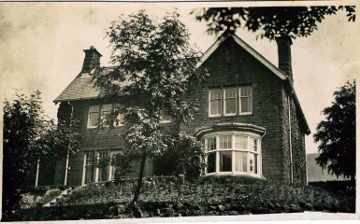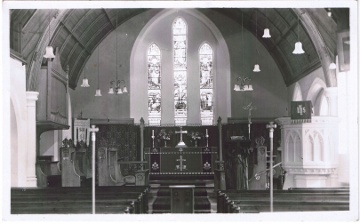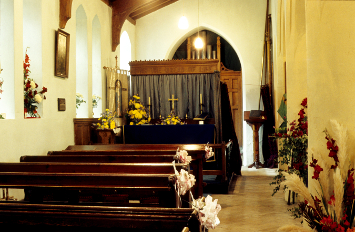A History of St. Pauls Church, Cwm

The Vicarage, St Pauls, Cwm St Pauls, Interior
St Pauls, Interior The North Nave
The North Nave
Called "The Lady Chapel"
Developments
During the ministry of Mr. Croft the vicarage and the Parish Hall were built and the extension to the Church was completed. The house was in use by 1907, but of the contractors or the architect, there is no record.
Over the building of the Parish Hall we are better informed.
The site (563 square yards or thereabouts) was bought from the Ebbw Vale Company for £59.1 1 s.8d.
The contractor was James Snelling, builder, of Cwm. He contracted with the vicar and the committee to complete the building for £1,050 by December 31, 1903 "and, in default thereof, he will pay a penalty of two pounds, ten shillings per week for every week the work after that date shall remain incomplete, and that the work be done to the entire satisfaction of Mr. L. Coombes, Railway View, Cwm, Mon". This was signed by Mr. Snelling on August 1, 1903.
The Rev. Coleman Williams had put aside £200 as a nucleus for a Parish Hall fund. The Society for Promoting Christian Knowledge made a grant of £145 upon certain conditions but this money was not paid until September, 1907, and the conditions are inserted in the Trust Deeds (now in the Registry at Cardiff).
Between 1900 and 1908 the parish had raised, by voluntary subscription, £1,300 towards the building fund for the Parish Hall, so that by 1908 the building had been more than paid for, £1,645 having been contributed. Some of this money would have been spent on furnishings and other fees.
The growth of the parish by the end of the first decade of the century was considerable and it was felt that it was time to enlarge the church. A faculty, dated July 27, 1909, gives us some idea of what was to take place.
The Church then consisted of a nave and chancel, with a vestry on the north side and a south porch.
It was proposed to: "thoroughly repair the church and to enlarge it by extending the nave seating over the present chancel. To erect a new chancel, north aisle, organ chamber and vestry on the north side of the new chancel with a heating chamber underneath. To construct a tower to the height of sixty feet - and to provide for an additional vestry in the tower on a level with the floor of the new north aisle-the arcade between the nave and the aisle to be built of Bath stone".
The estimate was £1,780 and it was contemplated carrying out the whole of the work "except the Tower which was to be deferred until funds permit". The actual work was estimated at £1,500 of which £200 had been raised by subscriptions and grants; £200 was borrowed by the parish from the Llandaff Church Extension Society at 2½ per cent interest and a further loan of £700 had been borrowed from the London and Provincial Bank, Ebbw Vale. The balance of £400 required to complete the work was to be raised by subscriptions.
The church provided accommodation for 197 but there would be an additional seating for a further 124 people, thus making the seating capacity in all 321, which is about the number at present.
The tower was never added.
During the alterations, services were held in the Parish Hall.
The work on the church was completed and the church re-consecrated on May 24, 1910.
Mr. Croft served as Vicar from 1900 to 1914 and then was appointed to Mountain Ash.
He was able to look back over those years with great satisfaction and much joy in his first parish as a vicar.
The Rev. D. J. Sproule was instituted on June 24, 1914.
The parish of Cwm had a population of 12,000 and our Sunday Schools an attendance of 360 children.
Our Junior School met at 2 o'clock and a Senior School at 3. In order to get a seat in Church for Evensong you had to be there half an hour before the service began, and at festivals chairs were carried from the Parish Hall.
Mr. Sproule had served as Curate at St. Marks Church, Newport,for four and a half years, and, coming to a parish as his first living, we can well imagine what a difficult task he faced.
There was a growing parish, and the outbreak of world war one brought many problems. Much was expected from him and there were many problems stemming from proposed Disestablishment and Disendowment of the Church in Wales.
Occasionally a minute book entry throws light on the trend of parish affairs. One entry is significant, for it points to a change that came about many years after it was made.
It concerns the Disestablishment: "proposed by Mr. E. D. Peters and seconded by Mr. W. J. Lewis, that we, in Vestry assembled, strongly protest against the unjust Bill for the Disestablishment and Disendowment of the Church in Wales. "Mr. E. D. Fudge supported the proposition in a very able speech"
The actual Disestablishment did not come into effect until 1919 - the war intervened.